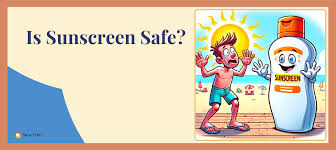
Sunscreen Safety: Is SPF Bad for You?
Sunscreen Safety: Examining the Concerns and Evidence
The EWG released a statement today (May 15 2024) that only 25% of sunscreens are safe and effective. Is this true? The EWG does not provide any details of the study they did on 1700 SPF products. This makes it impossible to understand what their study design was and what criteria they used for calling a sunscreen safe and adding it to their EWG safe sunscreen guide.
As a dermatologist, I often hear questions like “Does sunscreen cause cancer?” or “Is sunscreen bad for you?” These concerns are understandable, given the recent news about the FDA calling for more data on certain sunscreen ingredients. The new press release from the EWG convolutes this even more. What did they mean when they said “Most sunscreens don’t work as advertised”? All SPF must go through standard testing to show how much UVB protection they provide. They must be alluding to the lack of UVA testing of SPF – but we just don’t know what they are suggesting by this statement. So I’m here to help you take a deeper dive into non toxic sun protection and find out the truth about the safety of sunscreens.
In this blog, we’ll take a close look at sunscreen safety and the potential risks associated with some sunscreen ingredients, provide a list of bad sunscreens, and discuss the evidence behind these concerns.
If you are looking for a safe sunscreen to fit into your skin care routine you have several options:
1. Take the Baumann Skin Type Quiz to find a safe sunscreen for your skin type. On the question that asks which type of sunblock you prefer- choose mineral (Physical). If you are pregnant, say yes to the pregnancy question to find a pregnancy safe sunscreen.
2. Visit our collection of safe sunscreens
3. We also have a collection of coral reef safe sunscreens that are considered safe and are allowed in Hawaii – the state that has the strictest SPF safety regulations.
4. Ask your dermatologist. You can find a board certified dermatologist near you at AAD.org.
The FDA on Sunscreens
Sunscreens are essential for protecting our skin from harmful UV radiation, reducing the risk of skin cancer, premature aging, and sunburn. However, concerns have been raised about the safety of certain chemical sunscreen ingredients.
The FDA is currently calling for more data on 12 ingredients before determining whether they can continue to be classified as Generally Recognized as Safe and Effective (GRASE).
The ingredients commonly used in the U.S. that require further data are ensulizole, octisalate, homosalate, octocrylene, octinoxate, oxybenzone, and avobenzone. The ingredients not frequently used in the U.S. that also require additional data are cinoxate, dioxybenzone, meradimate, padimate O, and sulisobenzone.
It is important to note that while the FDA is asking for more data, it does not say that these ingredients are unsafe or ask the public to stop using sunscreens containing them. A recent FDA study examined four sunscreen ingredients and concluded that their absorption into the body supported the need for additional research to determine if the absorption has any effects on a person’s health. However, as the researchers pointed out, just because an ingredient is absorbed into the bloodstream does not necessarily mean that it is harmful or unsafe.
Research on ingredient safety is always ongoing, so this blog might change as developments in science come to light.
Is Sunscreen Bad for You
Before I get into the issues surrounding sunscreen safety, it’s essential for you to understand that the sun itself has been proven to be harmful to our skin.
Exposure to UV radiation from the sun can lead to immunosuppression, DNA mutations, and damage to skin cells and the overall structure of the skin. These effects can result in the development of skin cancers, sun spots, and premature skin aging. The dangers of sun exposure have been well-established through numerous studies, emphasizing the importance of using sunscreen as a protective measure.
The question then becomes: Are the potential risks associated with certain sunscreen ingredients worth the benefit of protecting our skin from the known dangers of sun exposure? The answer is yes. Even the most controversial sunscreens are still better than using no sunscreen at all.
It’s important to note that sunscreen ingredients sold today have not been directly and convincingly linked to any types of cancer or serious health concerns, despite being used by millions of people over several decades. While some studies have suggested that certain sunscreen ingredients might have some adverse effects, these have not been conclusively proven. However, there have not been enough studies to ascertain if some types of chemical sunscreens are bad for you. This is why the FDA is requiring more research on some sunscreen filters.
The problem with this ongoing controversy is that in the USA, we do not have access to some of the best sunscreens used in other countries because of the lack of safety data.
In general- the answer to the question “Is SPF bad?” is that it is not as dangerous for you as the sun is. However, there are safe options- so why not choose an option we know is safe. In this article I will discuss the sunscreen ingredients that are controversial- but be assured that there are safe physical mineral sunscreens with zinc oxide that have no health concerns. I have curated a collection of them here for your convenience.
GRAS Status and FDA Initiative
The FDA has recently taken steps to ensure the safety of sunscreen ingredients by re-evaluating their Generally Recognized as Safe and Effective (GRASE) status. GRASE is a designation given to ingredients that are considered safe and effective based on available scientific data and expert consensus.
In light of new research and concerns, the FDA has requested additional safety data on 12 common sunscreen ingredients before determining whether they can maintain their GRASE status.
Ensulizole
Octisalate
Homosalate
Octocrylene
Octinoxate
Oxybenzone
Avobenzone
Cinoxate
Dioxybenzone
Meradimate
Padimate O
Sulisobenzone
The first seven ingredients on the list (ensulizole, octisalate, homosalate, octocrylene, octinoxate, oxybenzone, and avobenzone) are commonly used in sunscreens in the United States. The last five ingredients (cinoxate, dioxybenzone, meradimate, padimate O, and sulisobenzone) are not frequently used in U.S. sunscreens.
This FDA sunscreen safety initiative aims to pinpoint which sunscreen ingredients have the best safety profile and provide consumers with the most up-to-date information.
It’s crucial to understand that the FDA’s request for more data does not mean that these ingredients have been proven unsafe. Rather, it signifies a proactive approach to ensuring the highest level of safety for consumers.
Is Sunscreen Bad for Your Skin
Sunscreen is good for your skin because it protects it from UV rays. Even the worst sunscreen with the most health concerns is still better for your skin than the sun (unless you are allergic to the sunscreen ingredient .) The concerns about sunscreens are listed below but they are not concerns about the effects of sunscreen on skin as much as they are about systemic issues which large amounts are used all over the body for long amounts of time over many years. It is the cumulative effect that really is the issue here- not one time use.
List of Bad Sunscreens
These have been called bad sunscreen ingredients because the FDA has requested more safety data, however, we do not know if these are harmful or not. My advice is to avoid these chemical sunscreens and choose other types of sunscreens:
Ensulizole
Octisalate
Homosalate
Octocrylene
Octinoxate
Oxybenzone
Avobenzone
If you find yourself stuck in the sun and the only SPF you have contains one of these, my advice is to use the sunscreen. The risk of sunburn greatly outweighs one time exposure to these. (and remember – there is not enough evidence to show these are bad or they would have already been removed from the market like the sunscreen PABA was.)
Does Sunscreen Cause Cancer?
We know the sun causes at least 3 types of skin cancer; basal cell carcinoma, squamous cell carcinoma, and melanoma. Some have suggested that long term use of some types of SPF can cause cancer in mice, this is very controversial and there are not enough convincing studies to say that sunscreen causes cancer in humans.
Why is SPF Bad for You?
There is no proof that SPF is bad for you but this section will discuss what the fears are and why the FDA is requiring more research on the safety of the sunscreens on the bad sunscreen list.” Let’s take a closer look at some of the specific concerns raised about sunscreen ingredients and the evidence behind them.
Hormone Disruption
The chemical sunscreens oxybenzone (benzophenone-3) and octinoxate (ethylhexyl methoxycinnamate) have been linked to potential hormone disruption. These chemicals can mimic natural hormones in the body and lead to endocrine system imbalances. Studies have shown that oxybenzone and octinoxate can bind to hormone receptors and exhibit estrogenic activity in cell and animal studies (Wang 2010, Schlumpf 2001). However, human studies have not conclusively demonstrated that typical usage of sunscreens containing these chemicals causes significant hormone disruption or negative health impacts (Janjua 2004).
Pregnancy and Breastfeeding
Certain sunscreen ingredients, such as oxybenzone and octinoxate, have been detected in breast milk (Schlumpf et al., 2010). This has led to concerns about potential effects on infant development. However, the levels found in breast milk are generally low, and the benefits of protecting the mother’s skin from sun damage during pregnancy and breastfeeding are thought to outweigh the potential risks. Pregnant and breastfeeding women who want to avoid ingredients on the bad sunscreen list should opt for mineral sunscreens containing zinc oxide or titanium dioxide.
Looking for pregnancy safe sunscreen? See our safe sunscreen collection below. These are all mineral sunscreens.
Fertility Issues
Oxybenzone and octinoxate have been associated with potential effects on reproductive health and fertility. Animal studies found exposure to oxybenzone affected reproductive hormone levels and development of reproductive organs (Schlumpf 2004). One human study linked higher oxybenzone exposure to lower testosterone levels in adolescent boys (Scinicariello 2016). However, it is unclear if fertility effects seen in animal studies are relevant to typical human exposures through sunscreen use, and more research is needed. My advice is for men and women to avoid using Oxybenzone and octinoxate if you are trying to conceive. Click here for a collection of oxybenzone free sunscreens.
Presence of Benzene
There is concern over the unintended contamination of some sunscreen products with the carcinogen benzene during manufacturing. Analysis by the lab Valisure detected benzene in multiple sunscreen products, especially aerosol sprays (Valisure Citizen Petition 2021). Benzene exposure is linked to blood disorders and cancer. However, benzene is not an intended sunscreen ingredient, and this contamination appears to be a sporadic manufacturing issue rather than an inherent issue with sunscreens. Uncontaminated products would not pose this risk.
Nanoparticles
Nanoparticles, particularly zinc oxide and titanium dioxide, are used in some mineral sunscreens. Concerns have been raised about the potential for these nanoparticles to penetrate the skin and cause harm. However, current evidence suggests that nanoparticles in sunscreens do not penetrate the skin’s deeper layers and are unlikely to cause significant adverse effects (Osmond-McLeod et al., 2016). The FDA has stated that zinc oxide and titanium dioxide can be GRASE depending on their particle size and other characteristics (FDA, 2019).
Allergies and Photoallergy/Phototoxic Reactions
Some sunscreen ingredients have been associated with allergic reactions, photoallergy, or phototoxic reactions in sensitive individuals. These reactions can cause redness, itching, or a rash. The most common culprits are:
Oxybenzone
Octinoxate
Octocrylene
Avobenzone
Padimate O
Neurotoxicity, Hepatotoxicity, and Nephrotoxicity
Some animal studies have suggested that certain sunscreen ingredients, particularly oxybenzone, may have potential neurotoxic, hepatotoxic, or nephrotoxic effects (Fediuk et al., 2011). However, these studies often involved high doses that do not reflect typical human exposure through sunscreen use. More research is needed to determine the relevance of these findings to human health.
My Opinion on SPF Safety
The bottom line is that you need sunscreen on your face every day and on your body when exposed to the sun. Some SPF ingredients are controversial, so play it safe and choose a mineral sunscreen. There are many cosmetically elegant ones on the market now.
However, if you find yourself in a situation where one of these “bad” sunscreens is your only choice, I recommend using it. As soon as possible, switch to a sunscreen on the safe list. In my opinion, oxybenzone is the sunscreen ingredient to avoid the most, especially when pregnant or breastfeeding.
Need help finding a sunscreen? Take our quiz and we can help you find the best one of your Baumann Skin Type.


